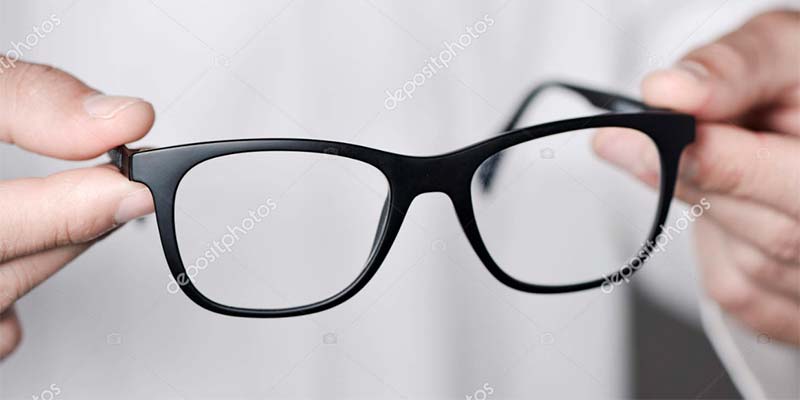Transition Lens
One Pair of Glasses Does it All with Transitions® Lenses
Transitions® lenses are a brand of photochromic lenses that are clear indoors and when you stop out into sunlight, they automatically darken. These lenses are designed to protect sight health and wellness by blocking 100 percent of harmful UVA and UVB rays. Ideal for everyday use, Transitions® lenses reduce glare and enhance contrast to provide comfort and help you see better.
Photochromic lenses, like Transitions®, provide convenience and comfort for everyday use. You no longer have to rely on multiple pairs of eyeglasses and sunglasses or bother with easy-to-lose clip ons. Experts believe that preventing a lifetime exposure to the sun's UV rays can greatly reduce the risk for cataracts and other age-related eye problems, making them ideal for kids who spend more time outdoors than adults.

Speksy can fit Transitions® lenses into all your favorite designer frames and styles.

ANTI-REFLECTIVE LENSES
Improve Your Vision with Anti-Reflective Coatings
Anti-reflective (AR) coatings provide a dual benefit by reducing the amount of glare that you see as well as any glare that reflected off of your lenses. Available light transmission is increased to 99.5% with the use of modern anti-reflective coatings.
Give Your Eyes a Rest
Studies show that the glare from fluorescent lighting, your computer screen, and even the reflection of car lights while driving at night can cause eye fatigue. This is greatly reduced with the use of anti-reflect lenses, which contain layers that are scientifically calculated to block all reflected light thus reducing surface reflections, halos around lights, and other harsh glares.
And Look Good Too
Whether you’re talking with someone in person, on camera, or getting your picture taken, light glare and reflections off of your lenses can be distracting and take away from your natural appearance. Often the internal reflections can appear as rings in typical lenses, making the lenses look thick. Anti-reflective coating has the opposite effect, giving lenses a thin, almost non-existent appearance that gives your eyes a more natural look.
Also Available for Sunglasses
Anti-Reflective coating is applied only to the back surface of sunglass lenses in order to help block light that is reflected from behind you back into your eyes. If the AR coating was applied to the front surface of the lenses, the sunglasses run the risk of looking smudged and blurry due to their dark tinting. Back-coated sunglasses are by far preferable cosmetically and methodically over front-coated AR lenses and lenses without AR coating.
In Summation
If you wear glasses while your drive, in bright weather, or anywhere that harsh reflections are possible, having lenses with Anti-Reflective coating is a must. These lenses do more than just reflect bad glares. They are easy to clean, stay clean longer, prevent smudging, and are more durable than other lenses; ensuring your eyeglasses or sunglasses will be long-lasting.
Boating, water skiing, inline skating, mountain biking, driving, or jogging.
Polarized sunglasses and eyeglasses are an excellent choice if you spend your time.
Polarized Lens
Reflect Natural Light with Polarized Lenses
Vertically oriented polarizers in Polarized Lenses help to block out annoying and dangerous horizontally polarized light such as reflected glare on surfaces of the road or flat water.
Some experts say that Polarized Lenses help to reduce the intense glare caused by sunlight reflecting off snow, but that the lenses are not satisfactory enough for winter sports such as downhill skiing because not enough contrast is provided to help the eye distinguish ice patches or moguls.
Polarized Lenses also have been known to react adversely with dashboard displays of some cars and in other places such as the digital screens on automatic teller (bank) machines that use liquid crystal displays (LCDs). When viewed from a certain angle while wearing polarized lenses, LCD screens have been known to appear invisible.

Speksy can fit Transitions® lenses into all your favorite designer frames and styles.
Advantages of Polarized Lenses
- Safely enhances visual acuity and clarity
- Filters glare
- Enhances contrast
- Reduces squinting
- Reduces reflections
- Thin and Lightweight
- Constant density tints
- Tintable and coatable
- Eyes feel rested
- Realistic perception
- Certain lens materials can be darkened
- Increased comfort

Progressive LENSES
See Better with New No-Line Lenses
Do you have trouble reading fine print? Progressive Lenses look just like single visions lenses but have the corrective properties of bifocal or trifocal lenses without the harsh lines. These no-line lenses have become the most widely purchased lenses to correct the loss of near vision.
The Big Difference: Progressives vs. Bifocals and Trifocals
Progressive Lenses have a seamless progression from distance to near with an intermediate section in between that creates a more natural correction of presbyopia than bifocals or trifocals. Because of this wide range of focal points, progressive lenses are considered to be "multifocals" that can be used to satisfy almost any visual need.
The upper portion of the lenses allow you to see short to long distances either while driving or simply looking across the room. Looking directly forward in the center of the lens you are able to clearly see faces and objects in a close radius. And fine print becomes easily legible, if you drop your gaze downward through the bottom portion of the lens.
In order to ensure the that all lens properties are accessible easily and comfortably, measurements are taken to determine where the focal corridor that runs vertically down the middle of the lens should be placed.
Progressive Lenses are designed to prevent "image jump" which is common with bifocal and trifocal lenses. The central corridor's alignment is designed to create a smooth, comfortable transition as opposed to the drastic change in focal power which causes images to appear to jump as you move from distance to near.
Progressive Lenses and You
Once a patient receives their new progressive lenses, there is a period of adjustment as they learn how to use them and what they can expect from their usage.
The first step is to point your nose directly at what you want to see. To set the object up in your best focus. slowly lower or raise your chin. There may be an initial difference in your peripheral vision that will require you to adjust your eye movement and head placement, but, this will pass as you become more adjusted to the lenses. For many this adjustment can happen within a few hours, thought it can also take as long as two weeks.
Common causes of most adaptation problems
- The optical center of the lens has been placed inaccurately. The segment/fitting height should be placed exactly in the center of the pupil.
- Progressive lens design is of the incorrect type.
- Not enough time has been allowed for adaptation.
- Patient does not understand how to use the progressive lenses correctly. Our experts can assist you with further adjustment techniques.
- The frame adjustments are different from previous glasses.
Quickly adjust to your new Progressive Lenses by:
- Wearing only your new progressive lenses.
- Keep the glasses as close to your face as possible; let them rest high on the bridge of your nose.
- When viewing an object, move your entire head to look directly toward it instead of just your eyes). Simply raise or lower your chin until the object is in focus.
Join Our Email Promotions
Receive a 10% discount off your first pair of frames with prescription lenses.
Use Code: SAVE10 at checkout.
Cannot be combined with other discounts.

